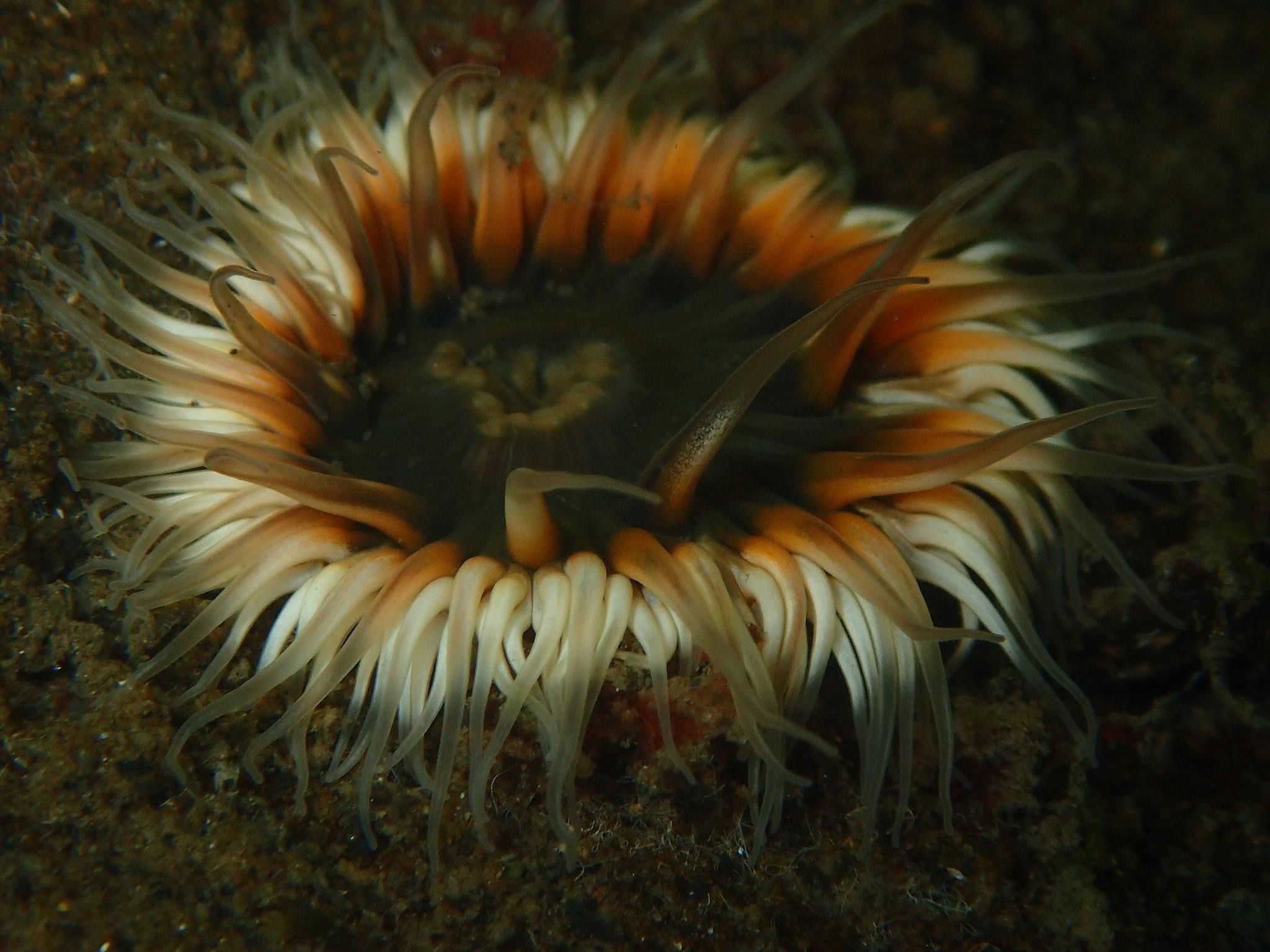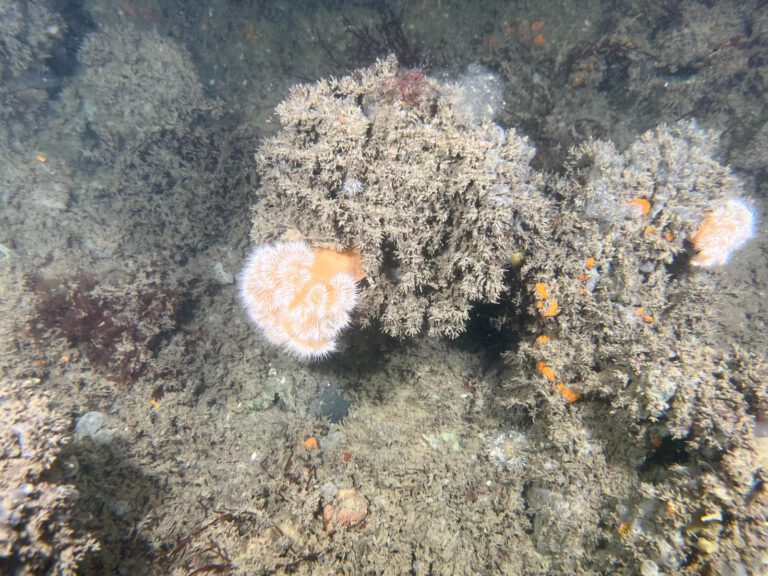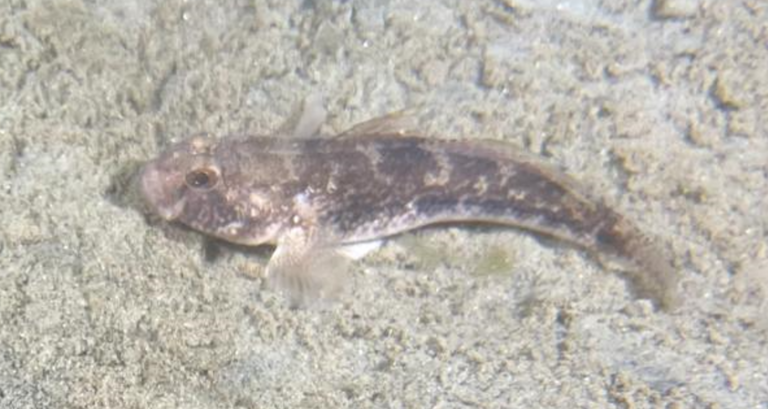Sea Dahlia – Urticina felina

Sea Dahlia - Urticina felina
Taxonomy: The Sea Dahlia (Urticina felina) belongs to the class “Anthozoa”. Which is part of the phylum Cnidaria. This phylum also includes corals and sea anemones. The name “Urticina” derives from Latin. Meaning “nettles” or “stinging”. Reflecting the anemone’s stinging cells.
Species: Urticina felina is a solitary sea anemone found in the North Atlantic Ocean. It is known for its colorful. Petal-like tentacles that extend from a central mouth. The Sea Dahlia can exhibit a range of colors. Including deep reds, pinks, oranges and purples making it a visually striking species.
Reproduction: Sea Dahlias reproduce both sexually and asexually. During sexual reproduction. They release eggs and sperm into the water. Where fertilization occurs externally. The resulting larvae. Known as planulae, settle on the seabed and develop into juvenile anemones. Asexual reproduction occurs through budding or fragmentation. Where new anemones grow from the parent or a piece of the parent, respectively.
Habitat: The Sea Dahlia is found in rocky or sandy environments in the North Atlantic, from shallow coastal waters to deeper offshore regions. It anchors itself securely to the seabed. Often in crevices or among rocks, where it can withstand currents and waves.
Diet: The Sea Dahlia is a carnivorous predator that primarily feeds on small fish, crustaceans and other marine invertebrates. It uses its tentacles to capture and immobilize prey. Which is then transferred to its central mouth for digestion. The anemone’s stinging cells help subdue its prey. Allowing it to feed efficiently.
Conservation: While the Sea Dahlia is not currently listed as endangered. It faces potential threats from habitat destruction and climate change. Coastal development, pollution and changes in ocean temperature can impact its habitat and food sources. Conservation efforts to protect marine environments are crucial for the continued survival of the Sea Dahlia and other marine species.
Unique Anatomy:
The Sea Dahlia’s vibrant appearance is complemented by its specialized anatomy. It has numerous stinging cells or nematocysts in its tentacles. Which help capture and immobilize prey. The anemone’s tentacles are arranged in a radial pattern around its central mouth. Resembling a flower and aiding in its feeding and defense.Regeneration:
Sea Dahlias have a remarkable ability to regenerate lost parts. If an anemone loses a portion of its body. It can regenerate the missing parts over time. This regenerative ability aids in their survival and adaptation in their dynamic marine environment.Lifespan:
The lifespan of the Sea Dahlia can vary. But in general, these anemones can live for several years. Their longevity is influenced by environmental conditions, predation pressures, and the overall health of their habitat.
Sea Dahlia: The Vibrant Beauty of the Ocean Floor
When exploring the underwater world. You might be captivated by the diverse array of marine life that graces the ocean floor. Among these fascinating creatures. The Sea Dahlia (Urticina felina) stands out for its striking appearance and intriguing behavior. Known for its vibrant colors and unique adaptations. Sea Dahlia is a remarkable example of the beauty and complexity of marine life.
What is the Sea Dahlia?
They are also known as the Urticina felina, belongs to the class Anthozoa within the phylum Cnidaria. This phylum also includes corals and sea anemones. The name “Sea Dahlia” reflects its floral resemblance. With its numerous, petal-like tentacles arranged in a radial pattern around a central mouth. Unlike many marine creatures, the Sea Dahlia exhibits a fascinating array of colors, ranging from deep reds and pinks to bright oranges and purples. These vibrant hues are not just for show—they play a crucial role in its survival, helping it blend into its environment and ward off potential predators.
Species and Distribution
Urticina felina is a solitary sea anemone found in the North Atlantic Ocean, including the coastal waters of Europe and North America. It typically resides in rocky crevices or on the seabed, where it can anchor itself securely. The Sea Dahlia is well-adapted to a range of depths, from shallow coastal waters to deeper offshore regions, making it a versatile and resilient species.
Reproduction and Life Cycle
Sea Dahlias reproduce both sexually and asexually. During sexual reproduction, they release eggs and sperm into the water, where fertilization occurs externally. The resulting larvae, known as planulae, eventually settle on the seabed and transform into juvenile anemones. Asexual reproduction can occur through budding, where new individuals grow from the parent anemone, or through fragmentation, where a piece of the anemone breaks off and develops into a new individual.
Habitat and Behavior
The Sea Dahlia thrives in rocky or sandy habitats where it can secure itself with its adhesive foot. It often forms small colonies or groups, creating a colorful display on the ocean floor. The anemone extends its tentacles to capture prey, primarily small fish and invertebrates, which are drawn towards its stinging cells or nematocysts. These specialized cells inject toxins into the prey, immobilizing it and allowing the Sea Dahlia to consume it.
Diet and Feeding
As a carnivorous predator, the Sea Dahlia primarily feeds on small fish, crustaceans, and other marine invertebrates. It uses its tentacles to capture and immobilize prey, which is then transferred to its central mouth for digestion. The anemone’s diet plays a crucial role in maintaining the balance of its local ecosystem, as it helps control the population of smaller marine organisms.
Conservation and Threats
While the Sea Dahlia is not currently listed as endangered, it faces potential threats from habitat destruction and climate change. Coastal development, pollution, and changes in ocean temperature can impact its habitat and food sources. Conservation efforts aimed at protecting marine environments and mitigating the effects of climate change are crucial for the continued survival of the Sea Dahlia and other marine species.
Unique Features and Adaptations
The Sea Dahlia’s vibrant appearance is not just for show. Its bright colors and intricate patterns help it blend into its surroundings and deter predators. The anemone’s tentacles are lined with specialized stinging cells that serve as both a defense mechanism and a means of capturing prey. Additionally, its ability to anchor itself securely to the seabed allows it to withstand strong currents and waves.
Lifespan
The lifespan of the Sea Dahlia can vary depending on environmental conditions and predation pressures. In general, these anemones can live for several years, with some individuals reaching up to a decade or more. Their longevity and resilience are testaments to their adaptability and survival in diverse marine environments.
Conclusion
The Sea Dahlia (Urticina felina) is a vibrant and captivating marine creature that adds a splash of color and wonder to the ocean floor. With its unique appearance, intriguing behaviors, and essential role in the marine ecosystem, it serves as a reminder of the incredible diversity of life beneath the waves. As with many marine species, it is vital to protect and preserve their habitats to ensure their continued existence. Next time you dive or explore the ocean, take a moment to appreciate the beauty and complexity of the Sea Dahlia and its role in the underwater world.







